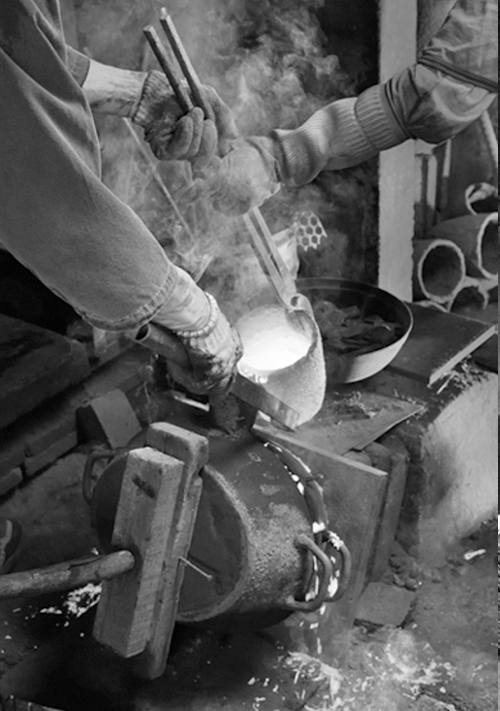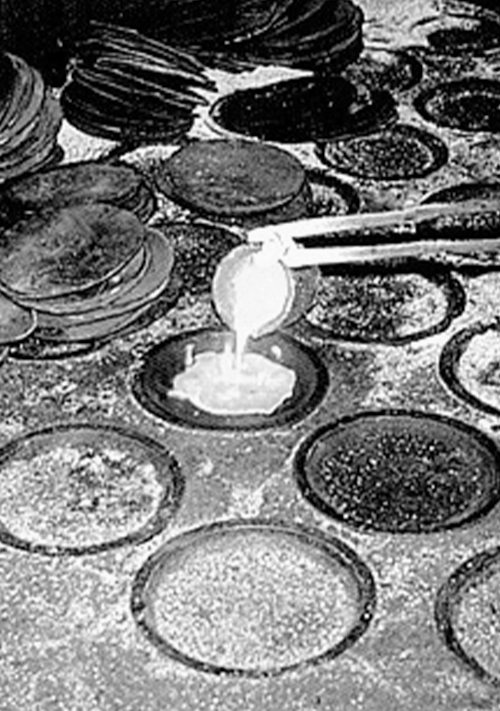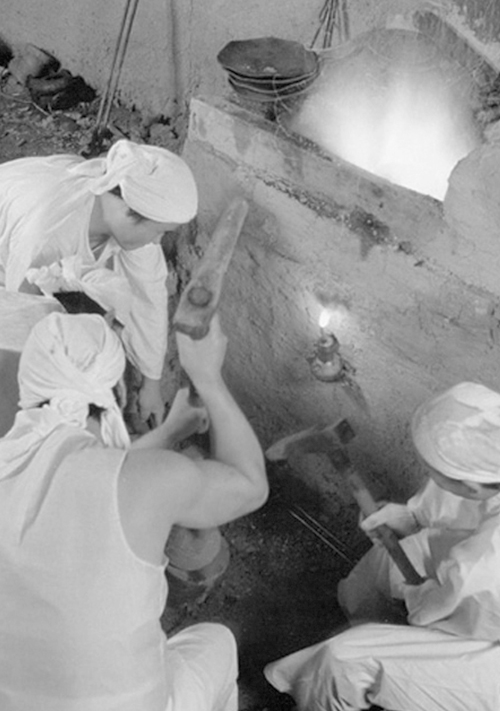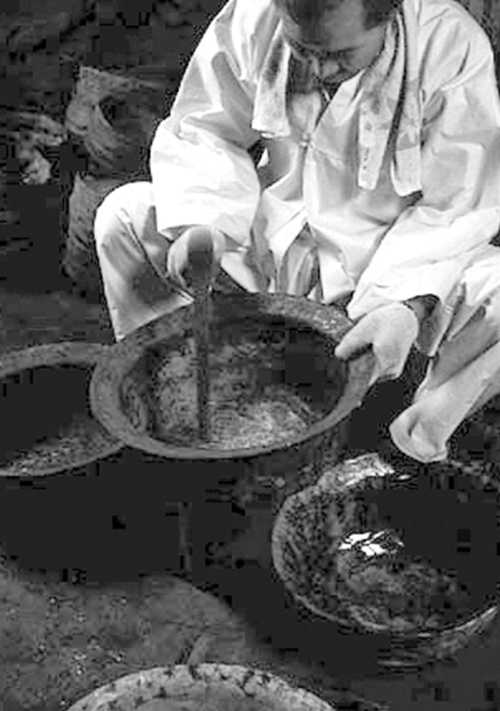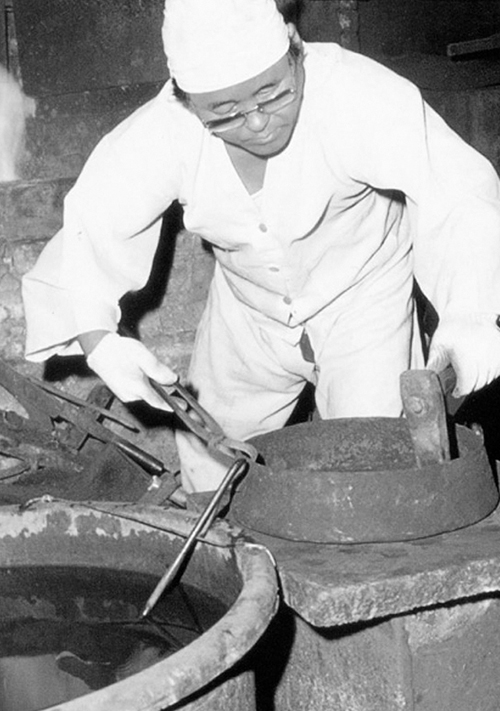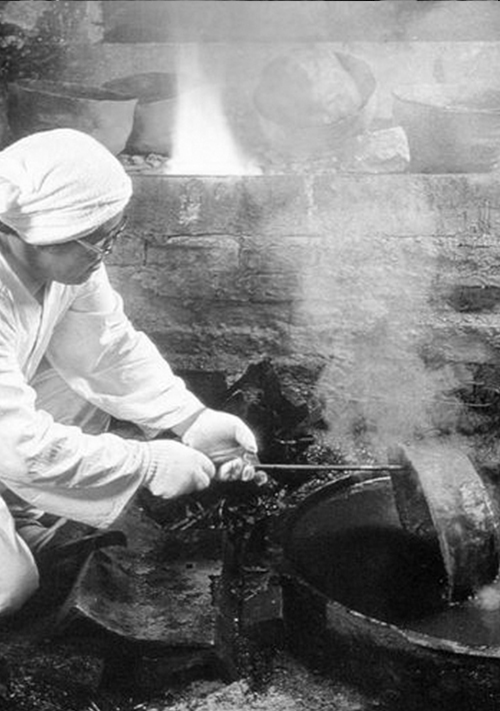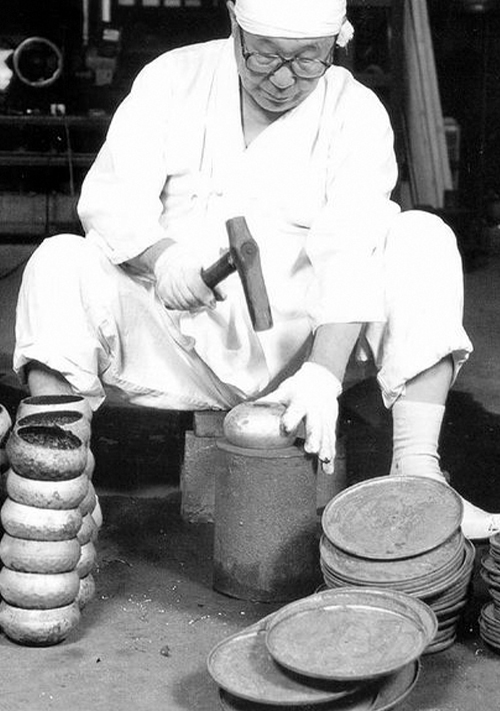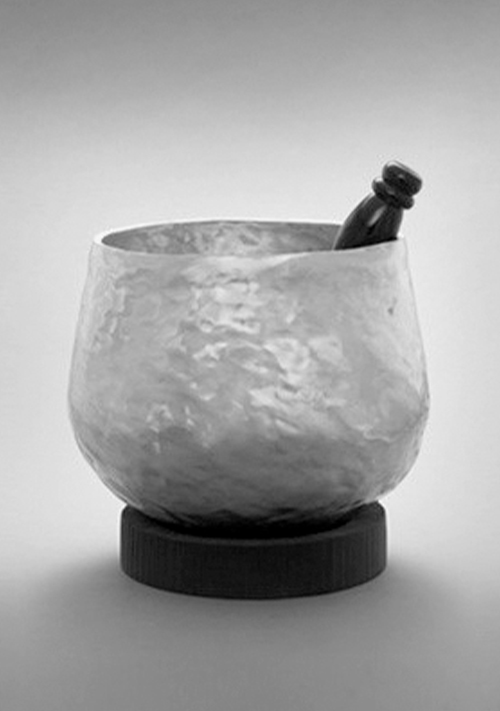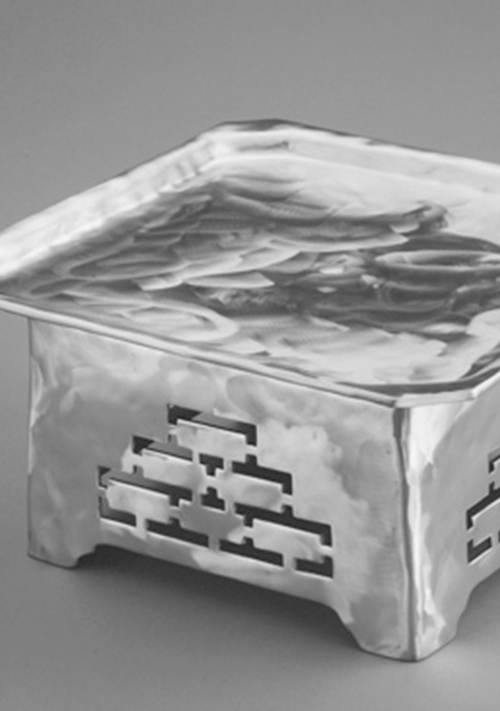Bangjja is a Korean form of hand-forged
brassware, which tends to be created in the Napcheong northern region in the country’s north. The material for
bangjja is a specific blend of 78% copper and 22% zinc, which is melted together and then hammered into shape
while still hot and malleable. The more the metal is pounded the more robust it becomes making for a highly
durable material perfect for use in tableware.
Because of its unique composition, bangjja is known to be self-sterilising and
the way it conducts heat means it can keep hot food hot and cold food cold for long periods. Bangjja however, is not only used in tableware, it is also applied in the creation
of a Korean traditional instrument called jong (a type of a gong). The jong, hand-forged by bangjja artisans, can be customised to make different tones through different shapes
and thicknesses of the instrument’s design. This hand-made process is seen as a work of art and a traditional
custom in Korea that continues to be coveted.
Bangjja brassware is produced using techniques that have been handed down over
thousands of years. These products are so hardy that even pieces made centuries ago are rarely bent or broken.
Today, Korean people are increasingly recognising the benefits of brass tableware, but most products on the
market tend to be machine-made using a process called jumul. While Bangjja brassware requires a more labour intensive and expensive process to make is
is better product that is longer-lasting and the rare craft behind it should not be forgotten.
